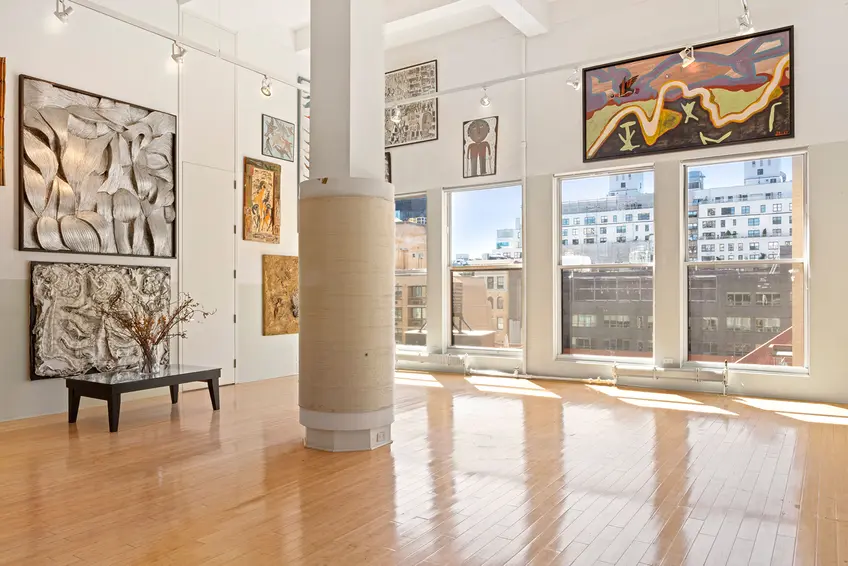 5 East 16th Street, #8FL (Brown Harris Stevens)
5 East 16th Street, #8FL (Brown Harris Stevens)
In the 130 years since The Photo Arts Building was constructed at 5 East 16th Street, it has served as a veritable encapsulation of the history and evolution of the Union Square neighborhood. It started out as an industrial building with such tenants as The New York Times Educational Line, Neuman Brothers Book Binding, embroidery firm of Leon Jobin, and suitmakers Oppenheimer & Neugless. In 1909, four more floors were added to the building and it was joined with the nearby 85 Fifth Avenue; apparel firms continued to occupy the building into the 1920s.
In the 1970s, 5 East 16th Street got swept up in the artistic renaissance sweeping downtown Manhattan: The Union Square Theater occupied space in the building, and photographers embraced the high-ceilinged lofts on top for the high ceilings and open space. Among them was Frank Cowan, whose clients included Volkswagen, Pampers, and Levi's Jeans; when he first moved into the space vacated by a handbag factory, he was paying $550/month in rent.
In the 1970s, 5 East 16th Street got swept up in the artistic renaissance sweeping downtown Manhattan: The Union Square Theater occupied space in the building, and photographers embraced the high-ceilinged lofts on top for the high ceilings and open space. Among them was Frank Cowan, whose clients included Volkswagen, Pampers, and Levi's Jeans; when he first moved into the space vacated by a handbag factory, he was paying $550/month in rent.
In 2008, the building was converted to residential use with only one unit per floor from the fourth floor on up. While not the most amenity-rich building to come along, the greatest perk is its Union Square address: The park, greenmarket, and transportation hub are practically right out the front door. There isn't a gym in the building, but it enjoys excellent access to top gyms and fitness studios, not to mention some of the city's best restaurants, bars, and shops.
In this article:
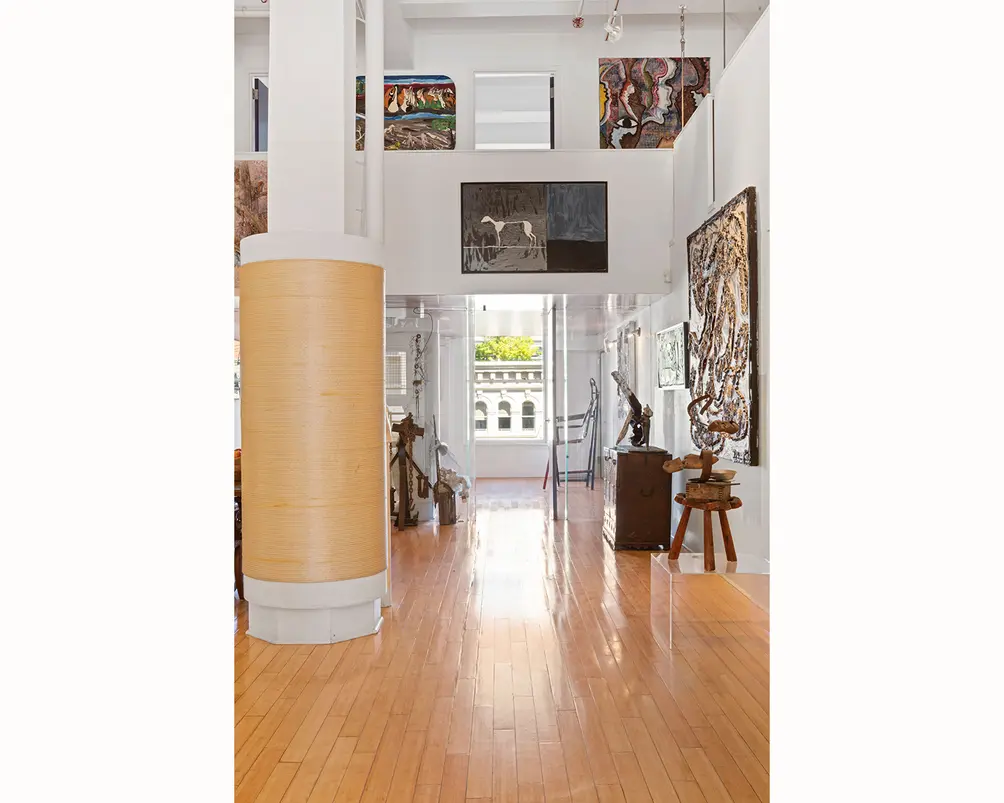
"From the moment we walked into this extraordinary space, we were awed by the expansive sunlight framed by the most unusual art collection we have ever seen" – Phillip and Julie Gaynor, Brown Harris Stevens

Amidst the residential conversion, features like soaring ceilings and walls with generous art space remained key parts of the units. That was especially useful for Ronald Shelp, AIG executive and author who is perhaps best known for the extensive collection of art from the American South accumulated with his wife June. Their collection has been on national tour and is the subject of the book Testimony: Vernacular Art of the African-American South.
Most recently, following the deaths of Mr. and Mrs. Shelp, the Smithsonian has selected pieces to add to their permanent collection in Washington, DC, and the couple's sons have put the apartment on the market for $6,250,000. While the art does not come with the apartment, a spokesman says buyers may negotiate to purchase some of the works.
Most recently, following the deaths of Mr. and Mrs. Shelp, the Smithsonian has selected pieces to add to their permanent collection in Washington, DC, and the couple's sons have put the apartment on the market for $6,250,000. While the art does not come with the apartment, a spokesman says buyers may negotiate to purchase some of the works.
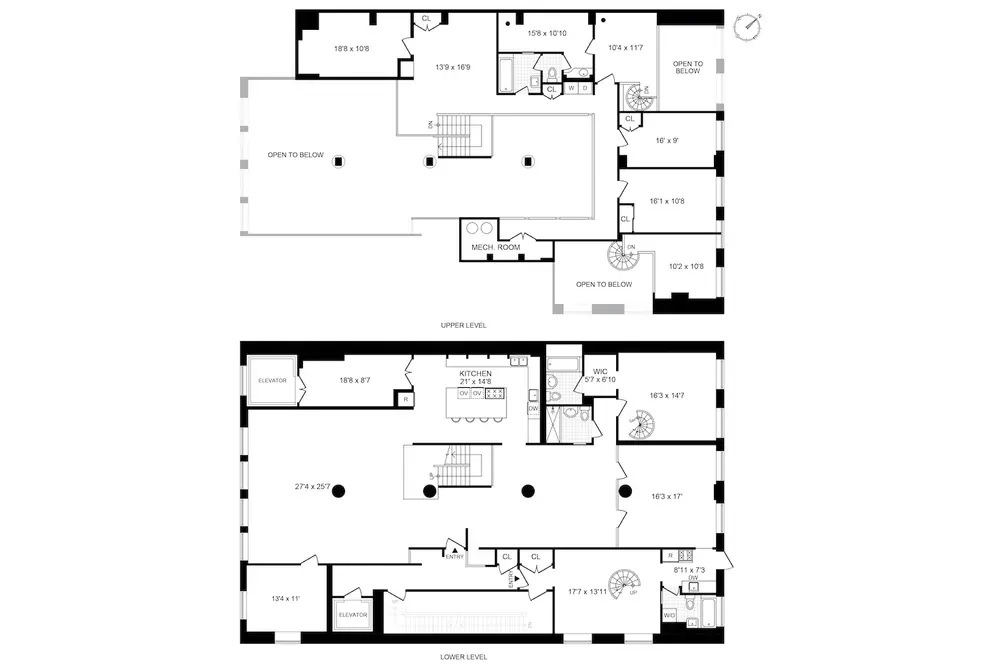
↓ The apartment is reached via key-locked elevator, which opens into a gracious foyer.
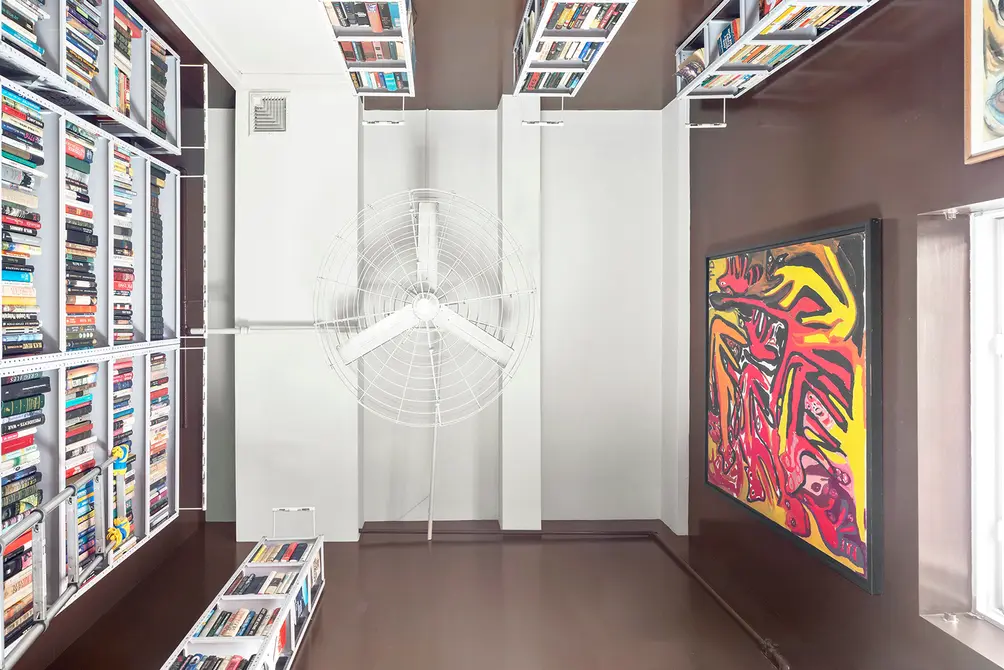
↓ The massive living room boasts soaring ceilings and walls of windows.
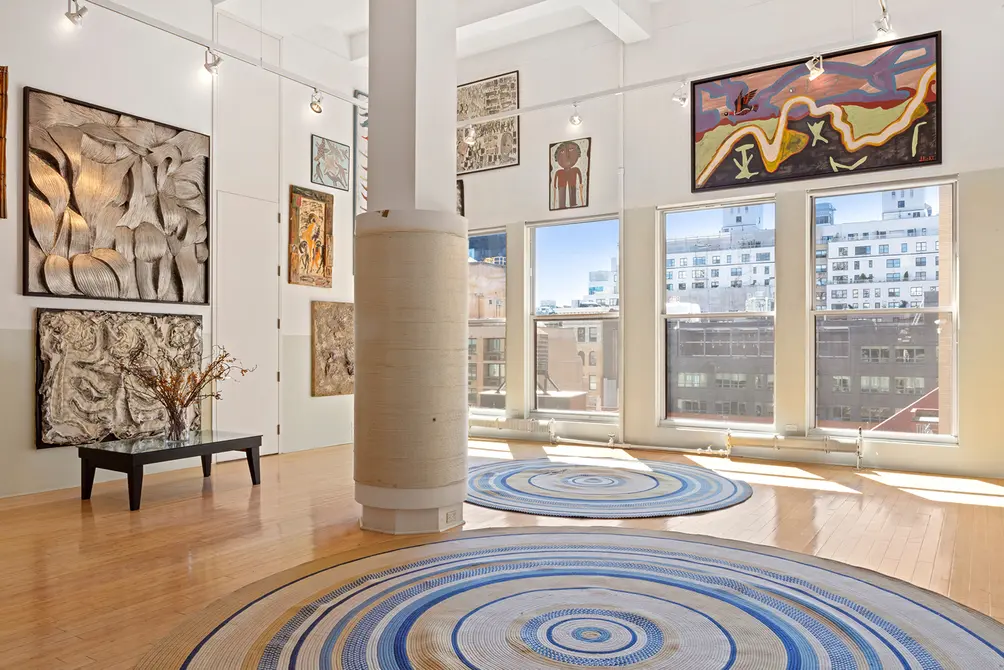
↓ The open-concept dining area is flooded with natural light.
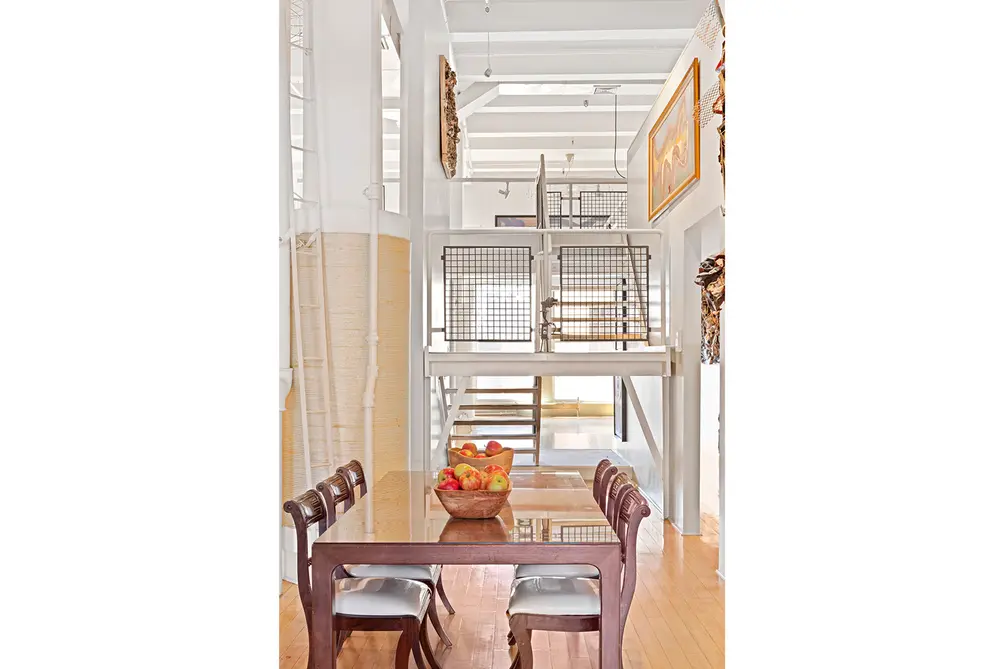
↓ The kitchen is equipped with an eat-in breakfast bar and Viking appliances.
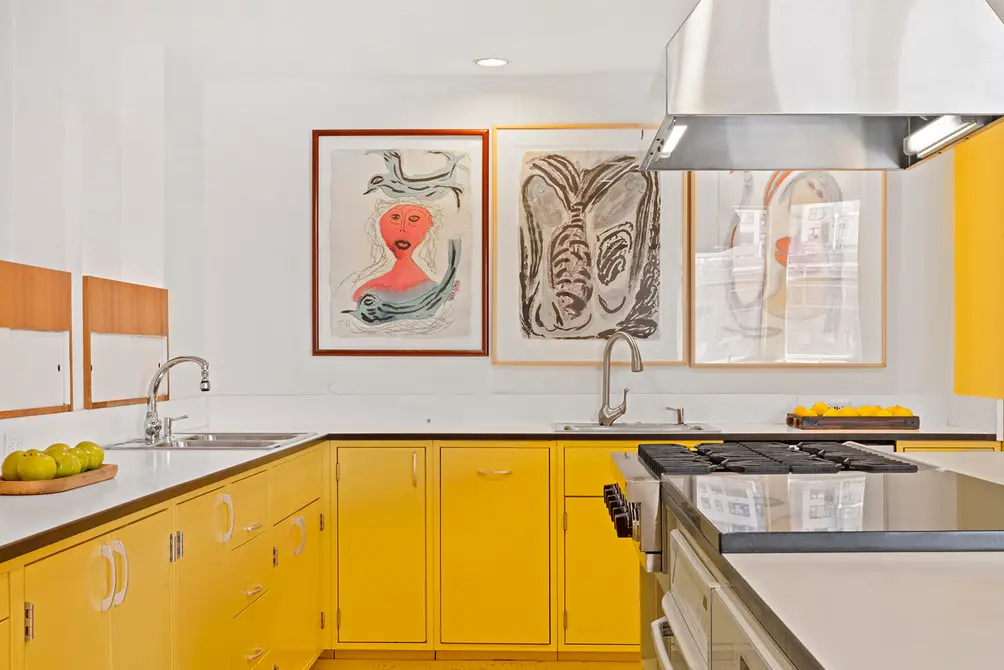
↓ Both levels of the loft are connected by an eye-catching staircase.
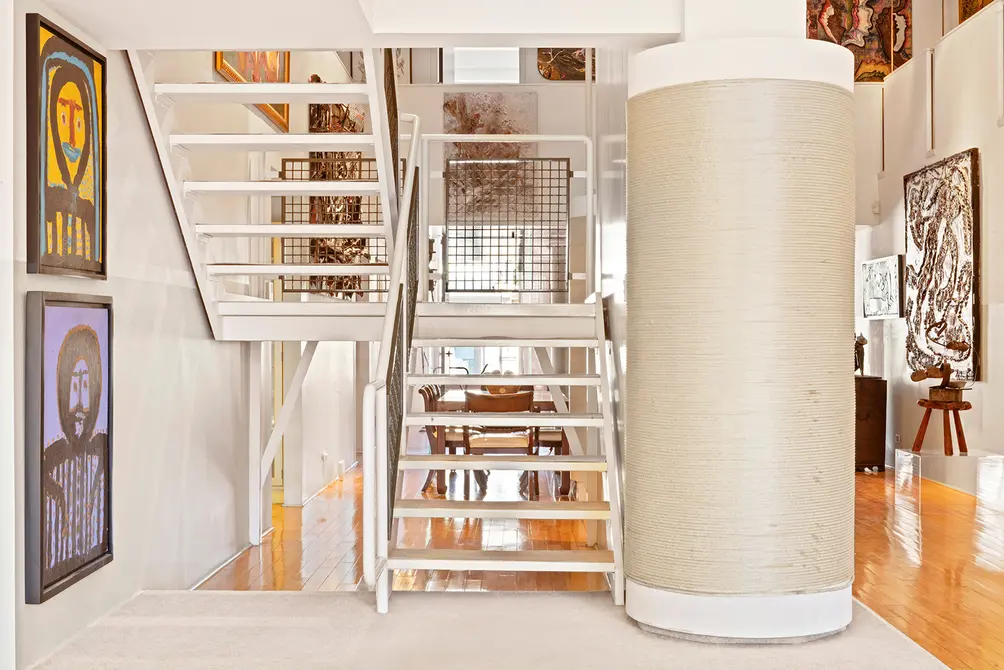
↓ The building allows live/work as well as residential use.
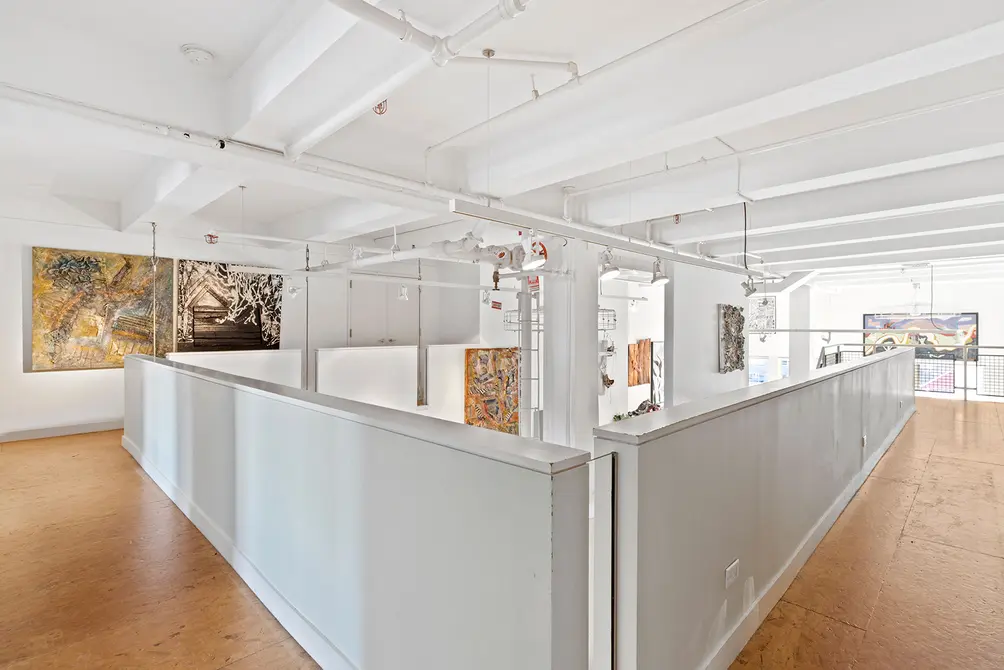
↓ The eighth floor also features a loft apartment that can be accessed from the foyer.
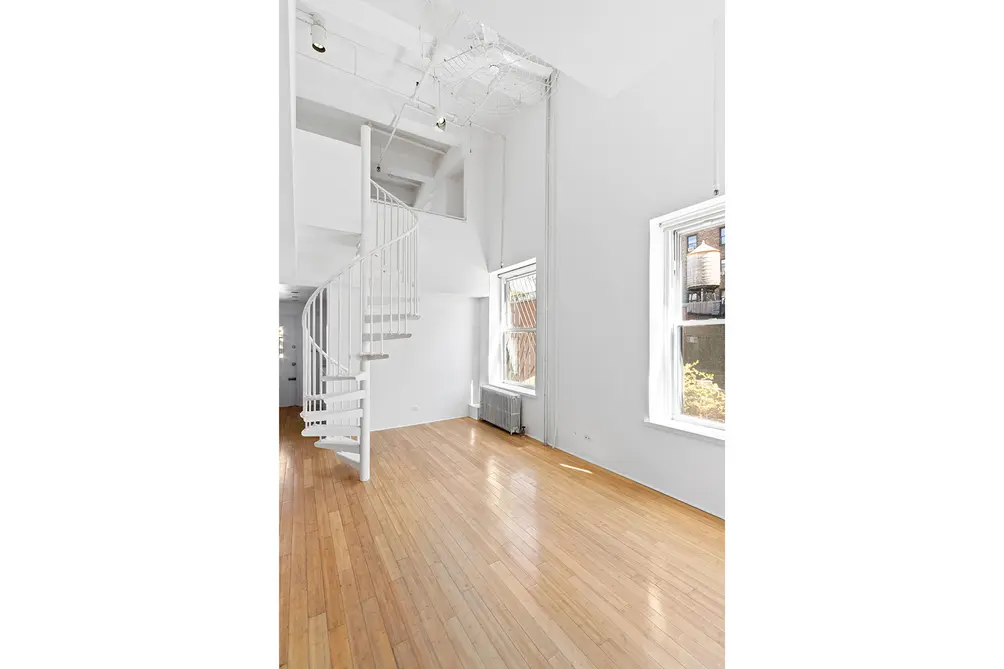
Would you like to tour any of these properties?

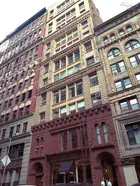
 6sqft delivers the latest on real estate, architecture, and design, straight from New York City.
6sqft delivers the latest on real estate, architecture, and design, straight from New York City.
